ATC code J01FA05 (WHO) PubChem CID 5284598 UNII P8ZQ646136 | CAS Number 3922-90-5 ChemSpider 4447646 Molar mass 687.858 g/mol | |
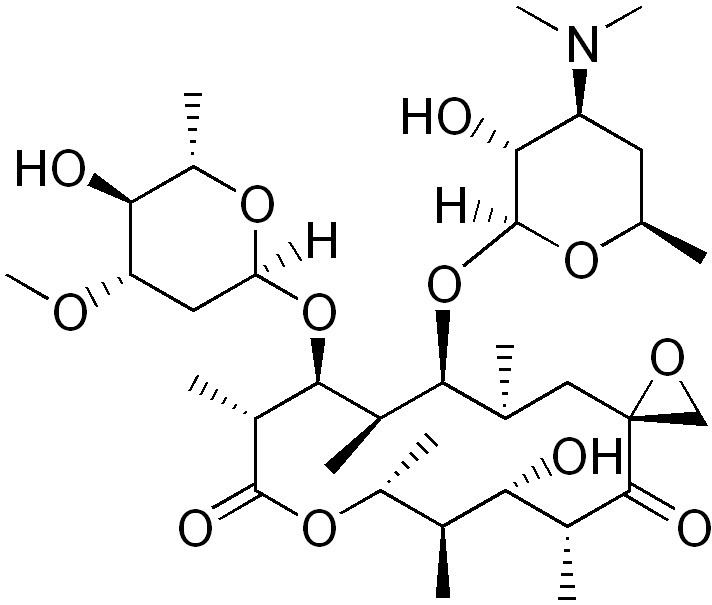 | ||
AHFS/Drugs.com International Drug Names | ||
How to say oleandomycin high quality voices
Oleandomycin is a macrolide antibiotic. It is synthesized from strains of Streptomyces antibioticus. It is weaker than erythromycin.
Contents
- How to say oleandomycin high quality voices
- Medical vocabulary what does oleandomycin mean
- Medical Use and Availability
- Brand names
- Origins
- Combination Drug Sigmamycine
- Mechanism of Action
- Relative Strength
- Polyketide synthesis
- Post PKS Tailoring
- References
It used to be sold under the brand name Sigmamycine, combined with tetracycline, and made by the company Rosa-Phytopharma in France.

Medical vocabulary what does oleandomycin mean
Medical Use and Availability

Oleandomycin can be employed to inhibit the activities of bacteria responsible for causing infections in the upper respiratory tract much like Erythromycin can. Both can affect staphylococcus and enterococcus genera.
The MIC for Oleandomycin is 0.3-3 µg/ml for Staphylococcus Aureus.
Oleandomycin is approved as a veterinary antibiotic in some countries. It has been approved as a swine and poultry antibiotic in the United States. However, it is currently only approved in the United States for production uses.
Brand names
Origins
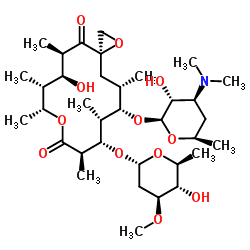
Oleandomycin was first discovered as a product of the bacterium Streptomyces Antibioticus in 1954 by Dr. Sobin, English, and Celmer. In 1960, Hochstein successfully managed to determine the structure of oleandomycin. This macrolide was discovered at around the same time as its relatives erythromycin and spiramycin.
Combination Drug Sigmamycine
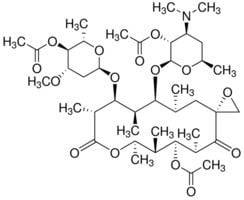
Public interest in oleandomycin peaked when Pfizer introduced the combination drug Sigmamycine into the market in 1956. Sigmamycine was a combination drug of oleandomycin and tetracycline that was supported by a major marketing campaign. It was in fact claimed that a 2:1 mixture of tetracycline and oleandomycin had a synergistic effect on staphylococci. It was also claimed that the mixture would be effective on organisms that are mostly resistant to tetracycline or oleandomycin alone. Both of these claims were refuted by findings such as those by Lawrence P. Garrod that could find no evidence that such claims were properly substantiated. By the early 1970s, Pfizer’s combination drugs were withdrawn from the market.
Mechanism of Action
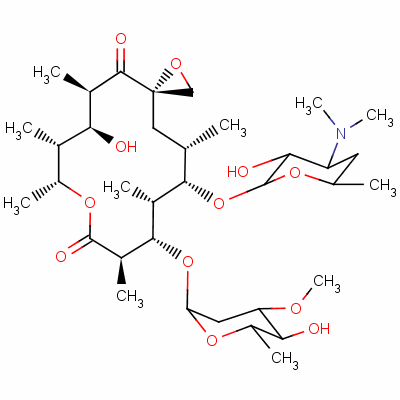
Oleandomycin is a bacteriostatic agent. Like erythromycin, oleandomycin binds to the 50s subunit of bacterial ribosomes, inhibiting the completion of proteins vital to survival and replication. It interferes with translational activity but also with 50s subunit formation.
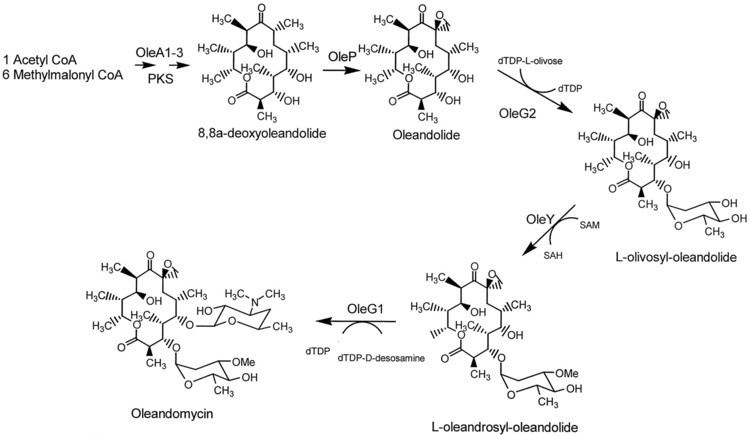
However, unlike erythromycin and its effective synthetic derivatives, it lacks a 12-hydroxyl group and a 3-methoxy group. This change in structure may adversely affect its interactions with 50S structures and explain why it is a less powerful antibiotic.
Relative Strength
Oleandomycin is far less effective than erythromycin in bacterial minimum inhibitory concentration tests involving staphylococci or enterococci. However, macrolide antibiotics can accumulate in organs or cells and this effect can prolong the bioactivity of this category of antibiotics even if its concentration in plasma is below what is considered capable of a therapeutic effect.
Polyketide synthesis
The oleandomycin synthase (OLES) follows the module structure of a type I synthase. The polyketide chain is bound through thioester linkages to the S-H groups of the ACP and KS domains (not shown).
The amino acid sequence similarities between OLES and 6-Deoxyerythronolide B synthase (erythromycin precursor synthase) show only a 45% common identity. Note that unlike in the erythromycin precursor synthase, there is a KS in the loading domain of OLES.
Post-PKS Tailoring
The genes OleG1 and G2 are responsible for the glycosyltransferases that attach oleandomycin’s characteristic sugars to the macrolide. These sugars are derived from TDP-glucose. OLEG1 transfers dTDP-D-desoamine and OleG2 transfers D-TDP-L-oleandrose to the macrolide ring. The epoxidation that occurs afterwards is from the enzyme encoded by OleP, which could be homologous with a P450 enzyme. The method by which OleP epoxidates is suspected to be a dihydroxylation followed by the conversion of a hydroxyl group into a phosphate group that then leaves via a nucleophilic ring closure by the other hydroxyl group.
